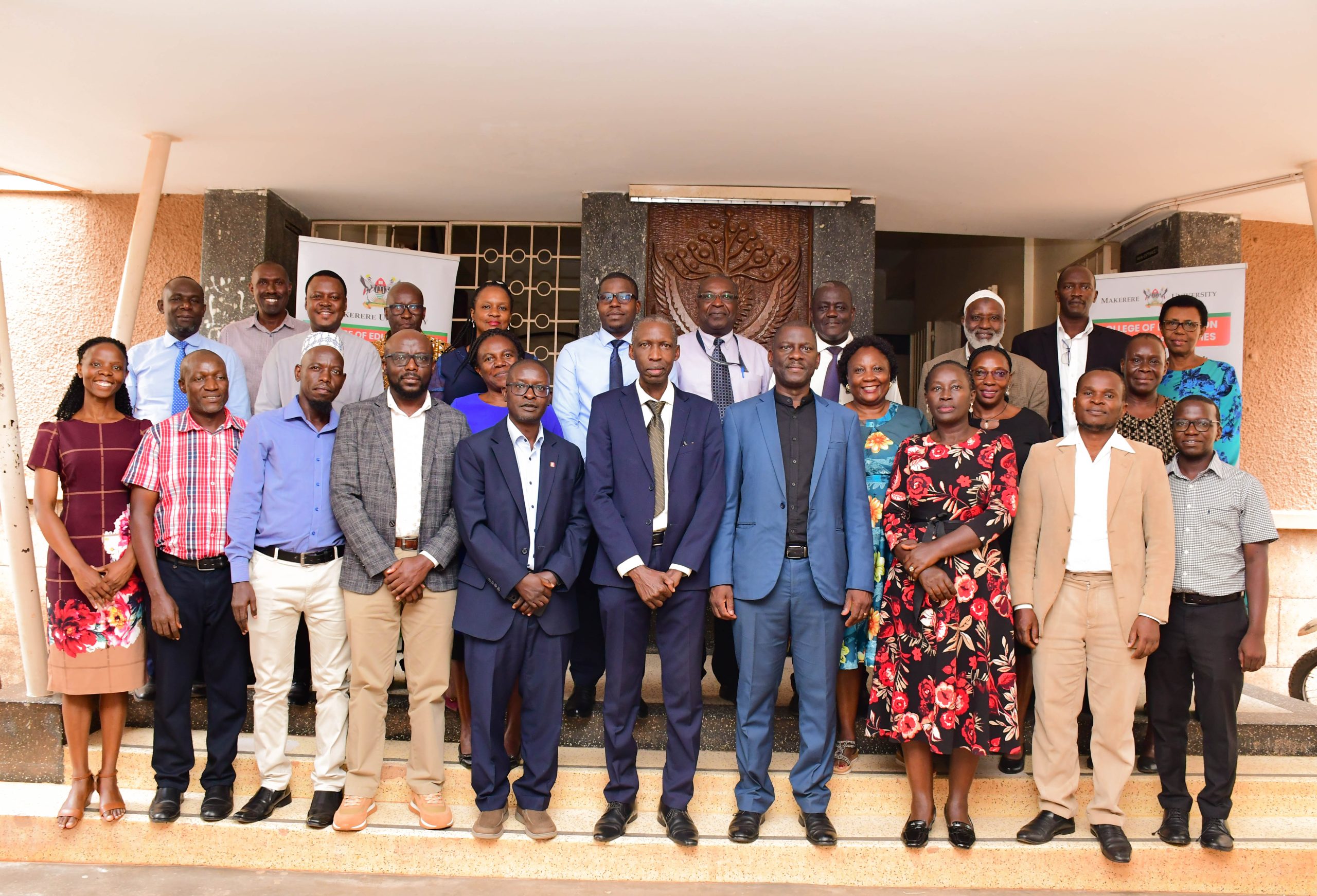The Principal CEES, Prof. Anthony Muwagga Mugagga (Seated 3rd L) and Dr. John Sentongo (Seated R) with members of the research team and participants at the dissemination on 30th August 2022, Makerere University. Science is of great importance nationally and internationally for sustainable and socio-economic development as well as for technological advancement. Knowledge of science and technology is therefore a requirement in all countries and needed by all people globally due to numerous challenges that are facing us.
These challenges include emergence of new drug resistant diseases, effects of genetic experimentation and engineering, ecological impact of modern technology, dangers of nuclear war and explosions and global warming among others, according to research. Science as an agent of development plays an important role in bringing about these changes through technological advancement, national wealth enhancement, health improvement and industrialization. This is why President Museveni has continued to advocate for the promotion of scientific and technological breakthrough.
This, however, is not without challenges. The teaching and learning of sciences in secondary schools has greatly been hindered by the lack of laboratories especially in rural schools. To this end, researchers at the College of Education and External Studies with funding from RIF have found a solution to this challenge. A team led by Dr. John Sentongo developed a new mode of teaching sciences using simulations and a smart TV. This new mode of teaching was a result of a research study titled “Use of ICT to promote Quality Science Education in Resource Constrained Secondary Schools in Central Uganda”
Dr. Sentongo, during the dissemination of the research results on August 30, 2022 said they sought to demonstrate the effectiveness of using a smart tv to teach practical work in science to enhance teaching and learning in selected secondary schools.
The researchers made simulations using PhET, of various laboratory experiments and put them on a TV box. It is this TV box that is connected to the TV set and a mouse used to navigate the system.
Simulation is defined as an experiential instructional method that teachers create to imitate or replicate actual events, problems, procedures, or skills to achieve the desired instructional results.
This mode of teaching was piloted in various schools in Uganda including Lwamata Seed School in Kiboga, Kasaka Secondary school in Gomba, St. Paul Kyanukuzi in Kyotera and Nakasoga SS in Rakai.
Each of the project schools was provided with:
- 1 smart TV Screen
- 1 UPS – Power back up
- 1 TV box (pre-loaded with WPS operating system and PhET simulations app )
- USB –Flash
- TV clap and cables
At the end of the pilot project, it was discovered that using a smart TV and simulations can improve science teaching and learning, teaching with the aid of a smart TV and simulations led to active classes and the innovation of a smart TV and simulations improved scores in the selected science subjects.
During the dissemination workshop, which was opened by the Principal of the College of Education and External Studies, Prof. Anthony Mawagga Mugagga, challenged the researchers to think about how to integrate ICT in the teaching of arts subject. He, however, warned about engaging in these new modes of teaching such as online teaching without proper planning. He called on the government to embrace these new innovations as they could go a long way in improving the learning and teaching of students.
Prof. Eddy Walakira, who represented the head of RIF, congratulated the team upon the successful completion of the research project, saying the research is outstanding and timely. He said, there is a high school dropout rate because many students feel they have not learnt anything, however this mode of teaching not only helps sustain interest of the learners but will ensure they learn something. He urged that the study should be scaled up to national level.
The representative form the Ministry of Education and Sports, Mr Webike Dauda asked Dr. Sentongo and his team to engage the MoES in an effort to see how to scale up the project to other resource constrained schools across the country. He also challenged the university to offer more training of teachers in ICT.
- How to use simulations on a smart TV screen
- Connect the TV to the power source through a UPS (Power back-up).
- Connect the TV box to the smart TV using an HDMI cable
- Connect the mouse to the TV box
- Insert the USB with prepared teaching materials (PowerPoint notes, videos etc.)
- Select the relevant instructional materials for the planned lesson
Project team
- Dr. John Sentongo
- Prof. Henry Busulwa
- Prof. Kibirige Israel
- Dr. Allen Nalugwa
- Dr. Robert Lugolole
- Mr. Mukiibi Ben Stuart
- Mr. Abubaker Muzira
The dissemination was attended by officials from NCHE, Ministry of Education and Sports, teachers and students of secondary schools, CEES staff and RIF officials.




